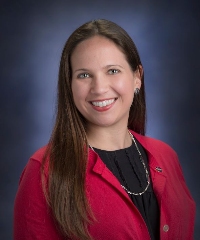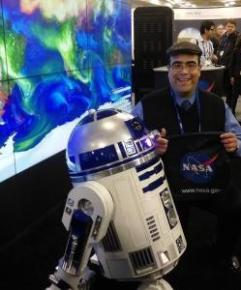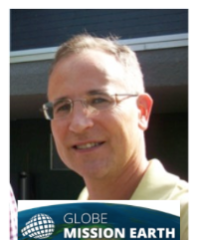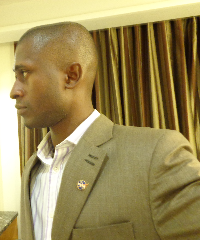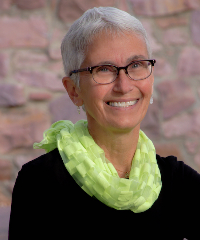GISN & STEM Professional's Blog - GLOBE International STEM Network
GISN & STEM Professional's Blog
The GLOBE International STEM Network (GISN) and STEM Professional's Blog is an online collaborative effort where scientists associated with GLOBE post their thoughts, comments, and philosophies about a variety of science topics.
GLOBE strongly encourages positive and productive discussions to further advance the scientific understanding of all involved with The GLOBE Program.
Filter By:
Blogs List
https://www.nasa.gov/wp-content/uploads/2023/04/wqd_comic_color_1.pdf?emrc=4ae699
https://www.nasa.gov/wp-content/uploads/2023/04/wqd_comic_coloring-sheet.pdf?emrc=7a0763
https://q12education.org/quantime
https://quantumfrontiers.com/2019/11/14/basketball-a-game-for-young-students-learning-quantum-computing/
https://iqim.caltech.edu/quantime/lessons.html#quantum-chess
Read More »
Posted in:
The GLOBE Clouds team is delighted to announce this new section that showcases sky and cloud photographs from around the world! We’ve also been receiving some amazing questions from students.
The featured question was asked by students from Corpus Christi Catholic School :
Question: Why can we see clouds but not evaporation?
Answer: Water vapor is invisible. However, the water in clouds is in liquid or solid state, not gas.
Do you have a favorite cloud photo or a question for the team? Use the linked form to cast your vote and ask us any question ...
Posted in:
Curriculum:
STEM
GLOBE Science Topics:
BACKYARD SCIENCE
CLIMATE
CLIMATE CHANGE
GENERAL SCIENCE
GENERAL SCIENCE @ES
EARTH AS A SYSTEM
EARTH SYSTEM SCIENCE
Investigation Areas:
ATMOSPHERE
EARTH AS A SYSTEM
News Topics:
NEWS BRIEFS
Primary Audience:
ALUMNI
COUNTRY COORDINATORS
PARTNERS
SCIENTISTS
STUDENTS
TEACHERS
TRAINERS
Waleska works with in-service teachers in the teacher training programs of the Galileo University and the University of San Carlos of Guatemala. She is the founder and coordinator of the STEAM program
Question: Where are you from?
Answer: I was born in the city of the eternal Spring, Guatemala City, in Central America, several eclipses, comets, and moons ago.
Question: What inspired you to work in this field?
Answer: Since I was little I had a fascination with natural phenomena, the reason why stars shine led me to be a Physicist, and fireflies and ...
Posted in:
Curriculum:
STEM
GLOBE Science Topics:
BACKYARD SCIENCE
CLIMATE
CLIMATE CHANGE
DATA INCLUDED
GENERAL SCIENCE
GENERAL SCIENCE @ES
SCIENTIST SKILLS
Investigation Areas:
ATMOSPHERE
EARTH AS A SYSTEM
Primary Audience:
ALUMNI
COUNTRY COORDINATORS
PARTNERS
SCIENTISTS
STUDENTS
TEACHERS
TRAINERS
Brad Hegyi is a research scientist for the NASA Prediction of Worldwide Energy Resources (POWER) project team at Langley Research Center in Hampton, Virginia, USA. Brad develops metrics and statistics for POWER from model estimates of future climate to help support planning for future energy use by heating and cooling systems in buildings. Brad also helps create interactive data products to better visualize changes occurring in the climate data.
The energy that comes from the Sun is the basic source of energy for everything on Earth. Solar energy drives Earth’s weather and ...
Posted in:
Curriculum:
TECHNOLOGY
STEM
GLOBE Science Topics:
BACKYARD SCIENCE
CLIMATE
CLIMATE CHANGE
DATA INCLUDED
GENERAL SCIENCE
EARTH AS A SYSTEM
EARTH SYSTEM SCIENCE
SCIENTIST SKILLS
Investigation Areas:
ATMOSPHERE
EARTH AS A SYSTEM
Primary Audience:
ALUMNI
COUNTRY COORDINATORS
PARTNERS
SCIENTISTS
STUDENTS
TEACHERS
TRAINERS
While doing a clouds protocol on the GLOBE Observer app, I notice something phenomenal in the sky. The first sun halo of 2024! These awesome atmospheric displays of light are caused by the sunlight striking the ice crystals in high level, cirrus-type clouds. These ice crystals act like prisms and refract the light to display a “rainbow ring” around the sun.
Often these sun halos forecast a change in the weather, usually stormy or in the case where I was at, very windy conditions the following day. When engaging our students in learning more about our atmosphere using the GLOBE Observer ...
Posted in:
The Sun drives many processes in Earth’s atmosphere. As the Sun rises and sets, it warms the Earth’s surface at different intensities. These changes in heat lead to changes in the clouds, especially the types of clouds. To study these changes, we need observations at different times over the course of hours, days, weeks, months, and years from around the globe. It can be tricky to capture the extent of these interactions with satellites alone, which is why we need observations from your perspective on the ground as part of the GLOBE Eclipse Challenge: Clouds and Our ...
Posted in:
Curriculum:
STEM
GLOBE Science Topics:
BACKYARD SCIENCE
CLIMATE
CLIMATE CHANGE
DATA INCLUDED
GENERAL SCIENCE
GLOBE PROTOCOLS
EARTH AS A SYSTEM
Investigation Areas:
ATMOSPHERE
EARTH AS A SYSTEM
Energy from the Sun warms our planet, and changes in sunlight can also cause changes in temperature, clouds, and wind. Clouds are ever changing and give you clues and information on what is happening in the atmosphere. Eclipses provide a natural experiment, in which the Sun’s light is blocked from Earth for a brief period in time, allowing us to observe the effects of that sudden change. Read the newly released blog post explaining in depth cloud formation and which ones would be impacted by the upcoming total solar eclipse over North America and how the data will be used. ...
Posted in:
Curriculum:
STEM
GLOBE Science Topics:
BACKYARD SCIENCE
CLIMATE
CLIMATE CHANGE
GLOBE PROTOCOLS
EARTH AS A SYSTEM
Investigation Areas:
ATMOSPHERE
CLOUDS
EARTH AS A SYSTEM
Primary Audience:
ALUMNI
COUNTRY COORDINATORS
PARTNERS
SCIENTISTS
STUDENTS
TEACHERS
TRAINERS
Since its inception, the GLOBE Observer (GO) app has community scientists to actively engage with NASA scientists by providing the opportunity to collect atmospheric, mosquito habitat, land cover and tree height data no matter where you are located in the world. This has opened the door for community science members to learn more about the environment and its impacts on their daily lives.
What has been uniquely applicable about the app is that it has helped college students to better understand various physical science concepts and has been an important tool in everyday curriculum. ...
Posted in:
Many do not have the chance to witness a rare annular solar eclipse. So when the opportunity for one to crossover the El Paso borderland, people from Mexico and the United States converged at the El Paso Community College Transmountain campus to experience the unique annular solar eclipse of 2023.
This unique eclipse occurs when the moon covers just enough of the sun outlining a “ring” of sun round the moon. Many in the El Paso region experienced close to 90% of the maximum effect, and provided an opportunity for those participating in the GLOBE Observer Eclipse protocol to collect ...
Posted in:
Recently NASA scientists studied dust storms and weather conditions in the Chihuahuan desert to better understand the impacts on climate and public health. Presentations at the Southern Arizona Dust Storm Workshop in 2020 and 2021 highlighted the importance of these events. Students at El Paso Community College (EPCC) helped contribute to this study by engaging students to take dust observations using the GLOBE Observer app. Data taken using the app has helped scientists better understand the effects of these dust storms in the Chihuahuan desert and increased environmental awareness ...
Posted in:
A journey through the clouds
Many times we take for granted the things that occur outside our window. For instance, the photo posted here is a fascinating cloud that appeared in the El Paso area in January. Social media went crazy from people all over town posting and commenting on the awesomeness of this feature. Some even mistaken them for UFO's. However, there is an explanation for this phenomena. This is an example of a lenticular cloud that occurs downwind from mountains or hilly regions. They form when winds carry moist air over mountains or hills, causing that air to ...
Posted in:
A new resource is now available created by GLOBE educator Mr. Roger Rose ( @rrose ) as part of his NASA internship in 2023 titled, GLOBE Atmosphere Clouds and NGSS . This document compares portions of the clouds protocol to Next Generation Science Standards (NGSS) for elementary and middle school with tips and resources to use in the classroom.
The document is available on the resources section of the NASA GLOBE Clouds page.
Posted in:
Curriculum:
SCIENCE AND MATH
STEM
GLOBE Science Topics:
BACKYARD SCIENCE
CLIMATE
GLOBE PROTOCOLS
SCIENTIST SKILLS
Investigation Areas:
ATMOSPHERE
Primary Audience:
COUNTRY COORDINATORS
PARTNERS
TEACHERS
TRAINERS
The urban heat island intensive observation period (IOP) this October yielded about 25% more observations than last year. I only look at surface temperature observations since that is the protocol that I developed (with help from others) and there are many other air temperature and cloud observations in the GLOBE database that are not part of the urban heat island IOP. This October there were a total of 2353 surface temperature observations made by 115 schools. This underscores the commitment of participating schools in contributing valuable insights into surface temperature variations. ...
Posted in:
Field Campaigns:
SURFACE TEMPERATURE
GLOBE Science Topics:
CLIMATE
Investigation Areas:
ATMOSPHERE
¡Las novedades trimestrales de NASA GLOBE Nubes están disponibles!
Próximamente: Reto de Nubes 2024
El equipo se complace en anunciar que en 2024 tendremos un Reto de Nubes centrado en cómo cambian las nubes a lo largo del día.
Finaliza la primera misión satelital Lidar de larga duración CALIPSO
CALIPSO (Cloud-Aerosol Lidar and Infrared Pathfinder Satellite Observations, por sus siglas en inglés), un satélite lidar que avanzó en la comprensión mundial del clima, el tiempo y la calidad del aire, finalizó su misión científica el 1 de agosto de 2023 después de 17 años de ...
Posted in:
Investigation Areas:
ATMOSPHERE
CLOUDS
The NASA GLOBE Clouds Quarterly Update is available for December, January, February 2023-2024!
Coming Soon: Cloud Challenge 2024
The team is excited to announce that in 2024 we will have a Cloud Challenge focused on how clouds change throughout the day.
First Long-Duration Lidar Satellite Mission CALIPSO Ends
CALIPSO (Cloud-Aerosol Lidar and Infrared Pathfinder Satellite Observations), a lidar satellite that advanced the world’s understanding of climate, weather, and air quality, ended its scientific mission on August 1, 2023 after 17 years of operation.
Meet an ...
Posted in:
GLOBE Science Topics:
BACKYARD SCIENCE
CLIMATE
CLIMATE CHANGE
GLOBE PROTOCOLS
Investigation Areas:
ATMOSPHERE
CLOUDS
News Topics:
NEWS BRIEFS
Primary Audience:
ALUMNI
COUNTRY COORDINATORS
PARTNERS
SCIENTISTS
STUDENTS
TEACHERS
TRAINERS
Results (continued)
Wood-chip temperatures
On 10 October, by myself this time, I had another surprise: how hot that wood chips, often used in landscaping are, with temperatures reaching 60-65°C at 13:00 MST, when the air temperature was 26.1°C. Seeing this, I decided to take several more measurements of wood-chip skin temperature. I chose to focus on the wood chips at the west end of the top of the mesa we live on, since on cloudless days they were exposed to full sun from noontime onwards.
Table 3a shows the environmental conditions for each observing session, ...
Introduction
The temperature of a surface – the grass, the sidewalk, or your skin – is called the “skin” temperature. Satellites monitor Earth’s skin temperature every day. Skin temperature is an important addition to several other variables – like soil type, plant cover, etc. – to estimate how the land surface is affecting the weather. Ocean skin temperature is also an important parameter in estimating near-surface air temperature over the oceans because there are few direct observations. Since the oceans cover such a large part of Earth, these temperatures are ...
For the past three years, the GLOBE Mission Earth (GME) Team at the University of Toledo, Ohio has been teaching and mentoring NASA-SEES high school students across the United States in the study of the Urban Heat Island Effect (UHIE) and Air Quality. In 2023, the NASA-SEES High School Virtual Internship Program had 20 interns for both the UHIE and Air Quality Groups.
During the 6-week virtual training, interns conducted research on the topics of their choice and met virtually three times a week to complete their projects. They also completed weekly assignments.
For the UHIE ...
Posted in:
Curriculum:
EDUCATION RESEARCH
STEM
Diversity, Equity, and Inclusion:
DIVERSITY, EQUITY, AND INCLUSION
GLOBE Working Groups:
EVALUATION WORKING GROUP
SCIENCE WORKING GROUP
EDUCATION WORKING GROUP
TECHNOLOGY WORKING GROUP
DEI WORKING GROUP
Investigation Areas:
ATMOSPHERE
HYDROSPHERE
EARTH AS A SYSTEM
PEDOSPHERE (SOIL)
BIOSPHERE
Primary Audience:
COUNTRY COORDINATORS
PARTNERS
SCIENTISTS
STUDENTS
TEACHERS
TRAINERS
Student Research Reports:
U.S. STUDENT RESEARCH SYMPOSIA (SRS)
MISSION EARTH REPORT
Adopt-a-Pixel | Where does water meet land in my community?
Scanning the Area
As our first assignment as part of the Earth System Explorers team, we've been tasked with making our first observations using the GLOBE Observer App. The goal was to make 12 total observations (6 Potential Mosquito Habitat & 6 Land Cover).
To be more efficient, I decided to make all of my observations at 6 different still bodies of water. This way I could do a MHM and a LC observation at each location.
Before I began, I scouted potential bodies of water on Global Surface Water ...
Posted in:
Investigation Areas:
EARTH AS A SYSTEM
LAND COVER CLASSIFICATION
MOSQUITOES
Primary Audience:
STUDENTS
TEACHERS
TRAINERS
I built my mosquito traps on June 20th and ran the experiment until July 15th. I collected a total of 15 observations during this period. To construct the traps I used three identical pots to hold water. The goal of my experiment was to find which type of mosquito bait would be the most effective at attracting and sheltering mosquitos. For the three baits I used dried leaves, grass clippings, and a wooden plank. I chose these three baits because they represent possible real life environments that mosquitos may breed in. The dried leaves simulates a pool of water that does not evaporate ...
Posted in:
Investigation Areas:
HYDROSPHERE
EARTH AS A SYSTEM
LAND COVER CLASSIFICATION
MOSQUITOES
Primary Audience:
STUDENTS
TEACHERS
TRAINERS
—
20 Items per Page







